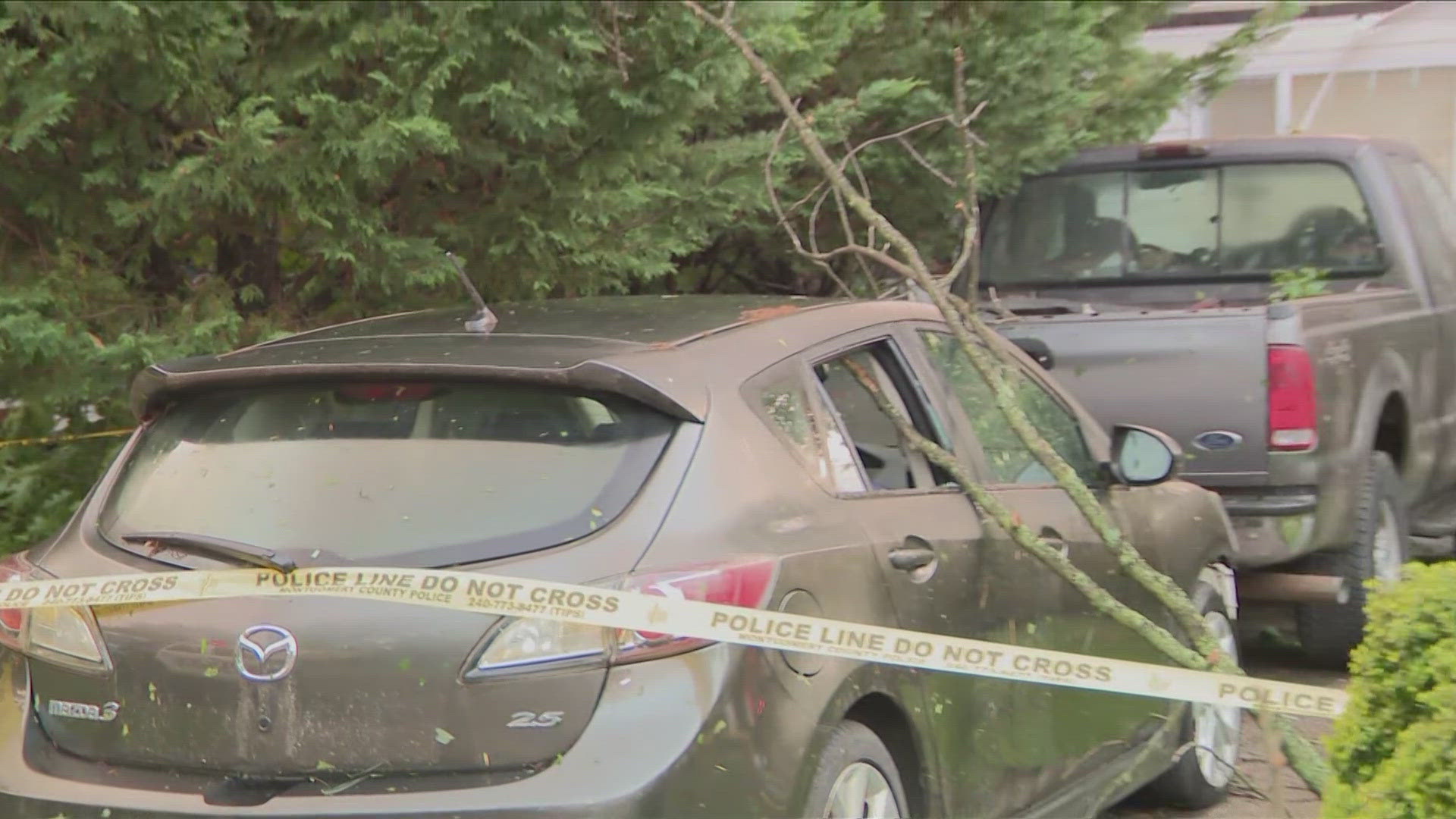MARYLAND, USA — As the sun rises Thursday morning, we are getting our first look at tornadoes that touched down in both Maryland and Virginia and the impact to our neighbors.
The National Weather Service has confirmed a funnel in Poolesville in Montgomery County. A tornado was confirmed in Loudoun County, Virginia earlier Wednesday as well. On Thursday, the NWS confirmed seven tornados in the area. That number could rise as in the coming days as the team continues to evaluate.
Several tornado warnings were issued for parts of Maryland and Virginia Wednesday evening. Montgomery County was under a tornado warning until it expired at 8:15 p.m.
The storm's rotation was spotted in Poolesville and around Gaithersburg, Olney and Brookeville as warnings continued to pop up for hours Wednesday night.
Damages were reported across Montgomery County Wednesday evening, including multiple structures that have collapsed with people trapped inside them in Gaithersburg.
Early Thursday, Earl Stoddard, Montgomery County's Director of Emergency Management said at "at least two" tornadoes touched down in the county, but more could be confirmed as the National Weather Service conducts surveys of damage across the county.
"What we believe is that the first tornado actually came across from Leesburg, across Poolesville, into Germantown and we think that's where it ended. The other one came from Gaithersburg, across 270 to where we are today, and proceeded across to Olney/Brookville," Stoddard said.
He also said it was too early to say how many injuries were a result of Wednesday's severe weather.
Stoddard urged residents to be safe while cleaning up from the storm.
Stoddard said according to early estimates, 15 tornadoes touched down across the state of Maryland causing several million dollars in damage. He said authorities would have a more complete estimate later Thursday.
How to stay safe in a storm
Staying outside in a storm is simply not safe. Here's what The National Weather Service says you should do if you are caught outside in a thunderstorm:
- Keep moving towards a safe shelter. If you are caught out in the open, do not stop.
Stay away from isolated trees or other tall objects. You do not want to be the tallest object! If you are in a forest, stay within a lower group of trees.
Avoid open fields, hills, boulder fields, rocky outcrops, and ridge tops. Do not lie flat on the ground.
Avoid bodies of water and metal objects, which can conduct electricity.
- Distance yourself from others in your group. Spread out so that, at most, only one person is likely to be hurt by lightning and the others can apply first aid.
The National Weather Service also recommends avoiding bleachers, dugouts and grandstands or standing near tall light poles.
If the hair starts standing up on the back of your neck, watch out - lightning is likely about to strike.
Lightning has a long arm
On average lightning can strike 15 to 25 miles away. This is why the National Weather Service recommends that you wait at least 30 minutes until a storm passes to give yourself a safe distance between you and the storm. In fact, a new record was confirmed in 2022 for a record lightning bolt that stretched 477 miles.
A tree is not the place to be
A tree may look like a great place to take shelter, but it's actually one of the worst places to be. Why? The wind can easily knock over a tree. Also, lightning is attracted to tall objects.
Water can knock you off of your feet
It doesn't take much water to make you stumble or fall. Six inches of moving water is enough to knock most adults off of their feet. If the forecast calls for heavy rain, scope out a place where you can quickly get to higher ground.

